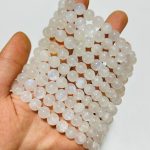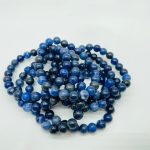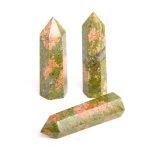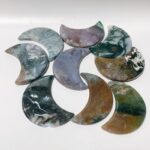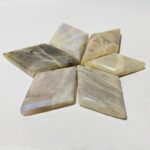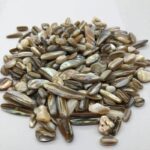Ultraviolet (UV) light, a type of electromagnetic radiation, lies just beyond the visible light spectrum. Invisible to the naked eye, it has the remarkable ability to excite certain substances, causing them to emit visible light in a phenomenon known as fluorescence. This intriguing property has led to a wide array of applications in various fields, from forensic science to medical diagnostics and entertainment. In this article, we will delve into the captivating world of fluorescence, exploring what glows under UV light and its practical applications.

Fluorescent Materials: A Kaleidoscope of Colors
The ability of a material to glow under UV light is determined by its specific molecular structure and the presence of certain atoms or ions. When UV photons strike these atoms or ions, they absorb energy and become excited. As the atoms return to their original energy state, they release the excess energy in the form of visible light.
The color of the emitted light depends on the energy level差 between the excited and ground states of the atoms or ions involved. Higher energy level差 result in shorter wavelengths of light, producing colors towards the blue end of the spectrum. Conversely, lower energy level差 yield longer wavelengths of light, resulting in colors towards the red end of the spectrum.
A vast array of materials exhibit fluorescence, each emitting a unique color under UV light. Some of the most common fluorescent materials include:
- Fluorescent dyes: Widely used in biological and chemical research to label and visualize specific molecules or structures.
- Minerals: Certain minerals, such as calcite and fluorite, glow under UV light, revealing hidden patterns and aiding in mineral identification.
- Gemstones: Many gemstones, including emeralds, rubies, and diamonds, exhibit fluorescence under UV light, enhancing their beauty and aiding in their identification.
- Security features: Fluorescent inks and pigments are commonly used in banknotes, passports, and other security documents to prevent counterfeiting.
- Entertainment: Fluorescent materials are extensively used in stage lighting, dance clubs, and other forms of entertainment to create vibrant and eye-catching effects.
Applications of Fluorescence: Illuminating Diverse Fields
The unique properties of fluorescent materials have spawned a plethora of practical applications across a wide range of fields:
Forensic Science
Forensic scientists utilize UV light to detect bloodstains, fibers, and other trace evidence that may be invisible to the naked eye. Fluorescence enhances the visibility of these materials, aiding in crime scene analysis and the identification of suspects.
Medical Diagnostics
Fluorescence microscopy is a powerful tool in medical diagnostics, allowing researchers and clinicians to visualize and analyze cells, tissues, and organs. Fluorescent dyes and probes can selectively bind to specific molecules or structures, enabling detailed examination of biological processes and the diagnosis of diseases.
Entertainment Industry
The entertainment industry heavily relies on fluorescence to create captivating visual effects. Fluorescent paints, fabrics, and props are used in stage productions, movies, and dance performances to enhance the visual experience and create otherworldly atmospheres.
Industrial Applications
Fluorescence-based sensors are used in industrial settings to detect leaks, cracks, and other defects in machinery and infrastructure. By monitoring the fluorescence of certain chemicals or dyes, these sensors can provide early warning of potential problems, preventing catastrophic failures and ensuring safety.
New and Emerging Applications
Beyond traditional applications, fluorescence continues to inspire innovative new uses. Some of the most promising emerging applications include:
- Quantum computing: Fluorescent materials are being explored as potential building blocks for quantum computers, which promise to revolutionize computation and cryptography.
- Solar energy: Researchers are developing fluorescent materials that can convert UV light into visible light, improving the efficiency of solar cells.
- Biomedical imaging: Advanced fluorescent imaging techniques are enabling real-time visualization of biological processes in living organisms, opening new avenues for medical research and diagnostics.
Table 1: Common Fluorescent Materials and Their Emitted Colors
| Material | Emitted Color |
|---|---|
| Fluorescein | Green |
| Rhodamine | Red |
| Cyanine | Blue |
| Coumarin | Yellow |
| Europium(III) | Red |
Table 2: Applications of Fluorescence in Various Fields
| Field | Application |
|---|---|
| Forensic science | Detection of bloodstains, fibers, and other trace evidence |
| Medical diagnostics | Visualization and analysis of cells, tissues, and organs |
| Entertainment industry | Creation of captivating visual effects in stage productions and movies |
| Industrial applications | Detection of leaks, cracks, and other defects in machinery and infrastructure |
| Quantum computing | Potential building blocks for quantum computers |
Table 3: Benefits of Fluorescence-Based Techniques
| Benefit | Description |
|---|---|
| High sensitivity | Detection of even small amounts of target molecules or structures |
| Specificity | Selective binding to specific molecules or structures, reducing background noise |
| Real-time imaging | Monitoring of dynamic biological processes in living organisms |
| Non-destructive | Minimal or no damage to samples, allowing for repeated measurements |
| Cost-effective | Relatively low-cost compared to other advanced imaging techniques |
Tips and Tricks for Enhancing Fluorescence
To maximize the fluorescence of a given material, consider the following tips:
- Choose the appropriate excitation wavelength: The optimal excitation wavelength for a fluorescent material depends on its specific absorption spectrum. Matching the excitation wavelength to the material’s absorption maximum will result in the strongest fluorescence.
- Use high-intensity UV light: The intensity of the UV light source directly affects the fluorescence強度. Stronger UV light sources will produce brighter fluorescence.
- Minimize background noise: Background noise can interfere with fluorescence detection. Use filters or shielding to minimize stray light and improve the signal-to-noise ratio.
- Consider the concentration of the fluorescent material: The concentration of the fluorescent material affects the intensity of the emitted light. Higher concentrations generally result in brighter fluorescence.
- Optimize the viewing conditions: The surrounding environment can impact the visibility of fluorescence. Viewing in a dark room with minimal ambient light will enhance the fluorescence effect.
Frequently Asked Questions (FAQs)
Q1: What is the difference between fluorescence and phosphorescence?
A1: Fluorescence occurs when a material emits light immediately upon absorbing UV radiation. Phosphorescence, on the other hand, involves a delayed emission of light after the UV radiation has been removed.
Q2: Can all materials glow under UV light?
A2: No, not all materials exhibit fluorescence. Only certain materials with specific molecular structures and the presence of certain atoms or ions have the ability to glow under UV light.
Q3: Is UV light harmful to materials?
A3: Yes, prolonged exposure to UV light can be harmful to certain materials, such as plastics and textiles, causing fading, degradation, and weakening.
Q4: What safety precautions should be taken when using UV light?
A4: It is important to wear protective eyewear when using UV light sources to avoid eye damage. Additionally, avoid prolonged skin exposure to UV light as it can cause sunburn and skin damage.
Q5: What are some creative applications of fluorescence?
A5: Fluorescence has inspired numerous creative applications, such as fluorescent paints and fabrics for artistic expression, glowing tattoos for body art, and fluorescent plant pigments for horticulture.
Q6: What is the future of fluorescence technology?
A6: The future of fluorescence technology holds exciting possibilities, including advancements in quantum computing, solar energy, and biomedical imaging. Researchers continue to explore and innovate new applications for this versatile technology.














